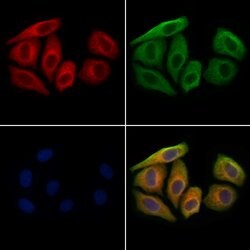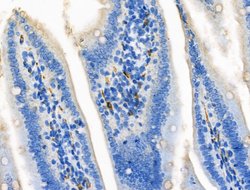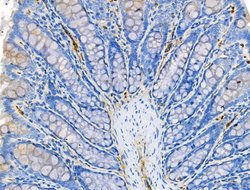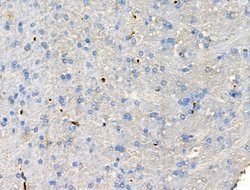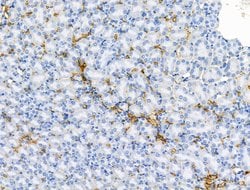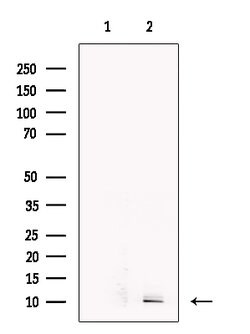Promotional price valid on web orders only. Your contract pricing may differ. Interested in signing up for a dedicated account number?
Learn More
Learn More
Invitrogen™ CCL14 Polyclonal Antibody
Rabbit Polyclonal Antibody
Supplier: Invitrogen™ PA5114956
Description
Antibody detects endogenous levels of total CCL14.
This gene, CCL14, is one of several CC cytokine genes clustered on 17q11.2. The CC cytokines are secreted proteins characterized by two adjacent cysteines. The cytokine encoded by this gene induces changes in intracellular calcium concentration and enzyme release in monocytes. This gene expresses both monocistronic and bicistronic transcripts. Bicistronic transcripts include the upstream cytokine gene CCL15. In addition, CCL14 undergoes alternative splicing in the bicistronic transcripts; it is unknown if its monocistronic transcript is also subject to alternative splicing.
Specifications
| CCL14 | |
| Polyclonal | |
| Unconjugated | |
| CCL14 | |
| C-C motif chemokine 14; C-C motif chemokine ligand 14; CC-1; CC-3; CCL14; chemokine (C-C motif) ligand 14; chemokine CC-1/CC-3; chemokine CC-3; CKB1; H HCC-1(1-74); HCC-1; HCC-1(1-74); HCC-1(3-74); HCC-1(4-74); HCC-1(9-74); HCC-1/HCC-3; HCC-3; hemofiltrate CC chemokine 1; MCIF; NCC2; NCC-2; new CC chemokine 2; SCYA14; SCYL2; small inducible cytokine subfamily A (Cys-Cys), member 14; small-inducible cytokine A14; SY14 | |
| Rabbit | |
| Affinity Chromatography | |
| RUO | |
| 6358 | |
| -20°C | |
| Liquid |
| Immunohistochemistry (Paraffin), Western Blot, Immunocytochemistry | |
| 1 mg/mL | |
| PBS with 50% glycerol and 0.02% sodium azide | |
| Q16627 | |
| CCL14 | |
| A synthesized peptide derived from human CCL14(Accession Q16627), corresponding to amino acid residues H31-K81. | |
| 100 μL | |
| Primary | |
| Human, Mouse, Rat | |
| Antibody | |
| IgG |
Safety and Handling
WARNING: Cancer - www.P65Warnings.ca.gov
Product Content Correction
Your input is important to us. Please complete this form to provide feedback related to the content on this product.
Product Title
Spot an opportunity for improvement?Share a Content Correction
